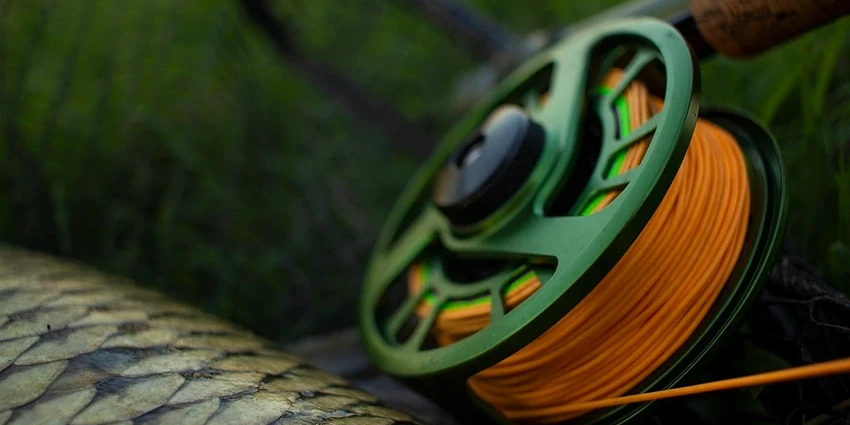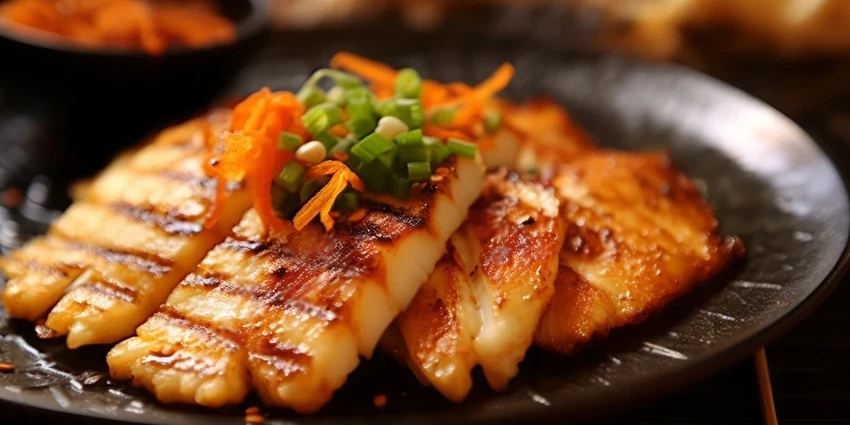All products were chosen independently by our editorial team. This review contains affiliate links and we may receive a commission for purchases made. Please read our affiliates FAQ page to find out more.
Jump to:
Can You Eat a Raw Mahi Mahi?
Yes, mahi-mahi, also known as dolphinfish, is commonly consumed raw in dishes like sushi and ceviche. When sourced from reputable suppliers and labeled as sushi-grade, it is considered safe for raw consumption. However, it’s crucial to ensure proper handling, storage, and freshness to minimize any potential risks.
Key Takeaways:
- Understanding Raw Mahi Mahi: Mahi Mahi is a versatile seafood choice, perfect for raw consumption under specific conditions.
- Safety First: Freshness and proper gutting are essential to avoid foodborne illnesses.
- Storing for Freshness: Proper storage in the fridge or freezer extends Mahi Mahi’s freshness.
- Preparing Mahi Mahi: A step-by-step guide ensures a safe and flavorful experience.
- Risk Awareness: Knowledge of common risks associated with raw consumption is crucial for a safe dining experience.
Introduction to Mahi Mahi
Mahi Mahi, a staple in seafood cuisine, is renowned for its versatility, especially in raw dishes. This fish, with its distinctively sweet flavor and firm texture, is a popular choice among seafood enthusiasts. When it comes to consuming Mahi Mahi raw, understanding the nuances of preparation and storage is crucial for both safety and enjoyment.
Is It Safe to Eat Mahi Mahi Raw?
Yes, you can savor Mahi Mahi in its raw form, but certain conditions must be met to ensure safety. The freshness of Mahi Mahi is paramount. Freshly caught and gutted Mahi Mahi minimizes the risk of foodborne illnesses, making it a safe option for dishes like sushi and ceviche. It’s important to note that consuming raw fish that isn’t fresh can expose you to risks like scombroid poisoning and parasitic infections.
Storing Raw Mahi Mahi for Freshness
Proper storage is key in maintaining the freshness of Mahi Mahi. It should be stored in an airtight container in the refrigerator or freezer. Using the first-in, first-out method ensures you always use the oldest stock first, reducing the chance of spoilage.
Freezer Storage
| Condition | Duration |
| Frozen | Up to 3 months |
Refrigerator Storage
| Condition | Duration |
| Fresh | 1-2 days |
Preparing Mahi Mahi for Raw Consumption
The preparation of Mahi Mahi is a crucial step. Immediately filleting and icing the fish ensures the reduction of harmful bacteria and maintains the clean flavor. For those unable to fillet, gutting and bleeding by cutting the gills is recommended.
Preparation Steps:
- Filleting: Immediately after catch.
- Icing: Keep fillets or the whole fish on ice.
- Gutting and Bleeding: If filleting is not possible.
Risks of Eating Raw Mahi Mahi
Being aware of the risks associated with raw fish consumption is essential. The main concerns include gastrointestinal symptoms, allergic reactions, and specific risks like histamine poisoning and parasite infections. To mitigate these risks, purchase Mahi Mahi from reputable sources and ensure it’s handled correctly.
Symptoms of Foodborne Illness:
- Vomiting
- Diarrhea
- Abdominal pain
- Itching
- Headache
- Irregular heartbeat
Reducing Risks:
- Purchase from reputable sources.
- Ensure proper handling and storage.
- Consume the fish as soon as possible, ideally on the day of purchase.
By understanding these risks and following guidelines for safe handling and preparation, you can enjoy the delectable taste of raw Mahi Mahi without compromising on health.
Flavor Profile and Nutritional Benefits of Raw Mahi Mahi
Raw Mahi Mahi offers a delightful taste profile, characterized by its mild and sweet undertones. This flavor makes it a highly versatile ingredient in various raw preparations.
Nutritional Benefits:
- Protein: An excellent source of lean protein.
- Omega-3 Fatty Acids: Beneficial for heart health and reducing inflammation.
- Vitamin A: Supports vision health and boosts the immune system.
Mahi Mahi’s nutritional content makes it not only a tantalizing choice for the palate but also a healthy option for a balanced diet.
Preparing and Enjoying Popular Raw Mahi Mahi Dishes
Mahi Mahi shines in raw dishes, with its firm and flaky texture complementing various culinary styles.
Popular Raw Dishes:
- Sashimi: Thinly sliced, served with soy sauce and wasabi.
- Poke: Bite-sized pieces marinated and served over rice.
- Ceviche: Fresh cubes marinated in citrus juices.
Each dish offers a unique way to enjoy the subtle yet pronounced flavors of Mahi Mahi.
Table: Raw Mahi Mahi Dish Preparation
| Dish | Preparation Method |
| Sashimi | Thinly sliced, served with condiments |
| Poke | Marinated cubes, served over rice |
| Ceviche | Marinated in citrus, served chilled |
Register for our latest in-depth reviews and product round-ups from the experts
Enter your email address below to receive our twice monthly reviews emails.
By entering your details, you are agreeing to our terms and conditions and privacy policy. You can unsubscribe at any time.
FAQs About Eating Raw Mahi Mahi
Pregnant women are generally advised to avoid raw fish due to the risk of foodborne illnesses.
Fresh Mahi Mahi has pink flesh and a bright red bloodline. Look for a firm texture and a mild fishy smell.
Consuming previously frozen Mahi Mahi can be safe if it was frozen shortly after being caught and stored properly. However, freshness is key for the best flavor and safety.
Spoiled Mahi Mahi may have a sour or ammonia-like smell, a greyish-white color, and a sticky or slimy texture.
Raw Mahi Mahi should be consumed within 1-2 days when stored in the refrigerator.
By addressing these common questions, you can ensure a safe and enjoyable experience with raw Mahi Mahi.
Martin Cochran, renowned for his expertise in deep-sea fishing and marine wildlife, plays a pivotal role at Fresh Catch Daily. His adventures across various oceans have equipped him with unique insights and techniques, enriching our platform with diverse and engaging content for fishing enthusiasts.










